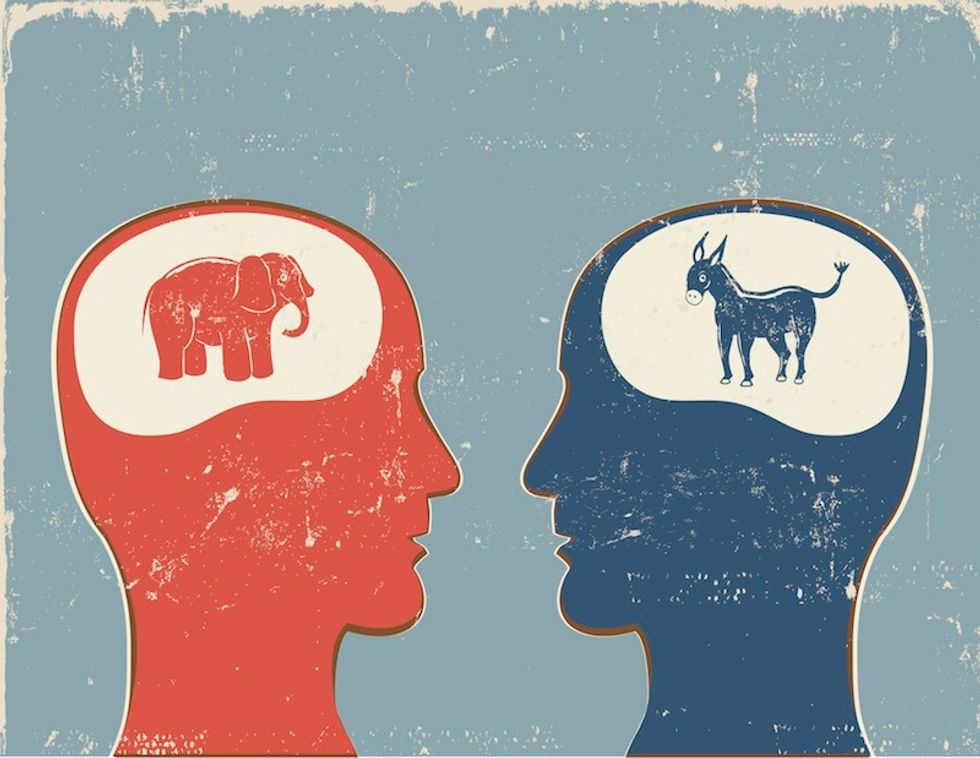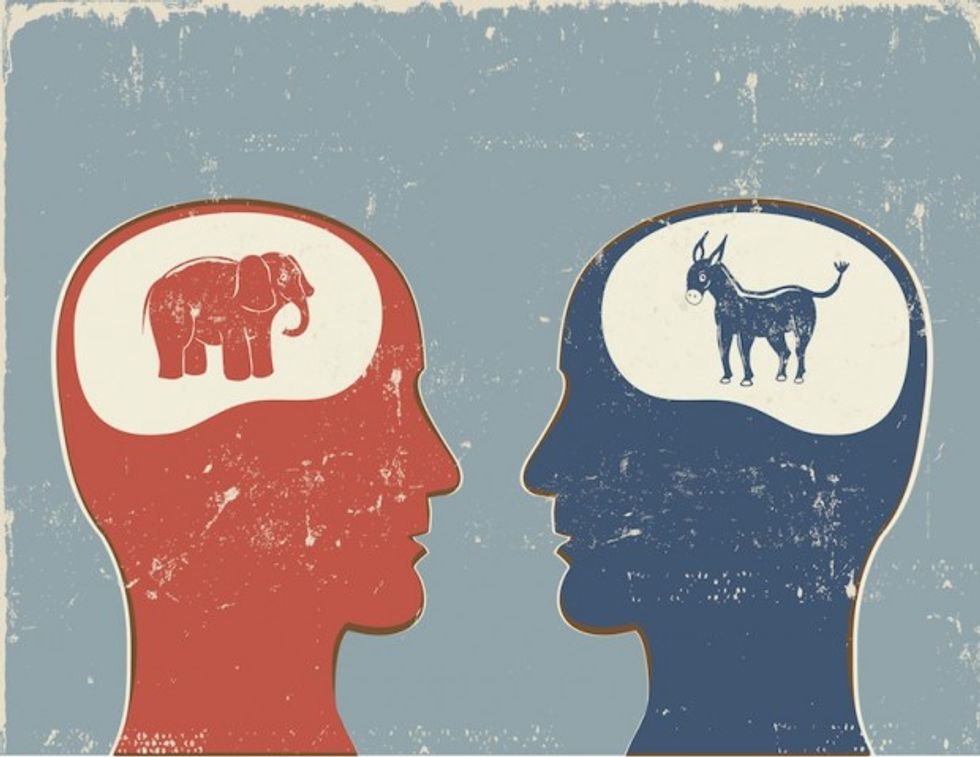
Image credit: Nevada Policy Research Institute

What on Earth is going on in U.S. politics?
Despite never having held public office and having an irregular history of political positions, Donald Trump is the favorite to become the presidential candidate for the Republican Party (count me among the surprised).
Meanwhile, Hillary Clinton, a stalwart member of the Democratic Party, has found herself struggling to defeat Bernie Sanders – a rival for the party’s nomination who isn’t even a registered Democrat.
Why are Americans so frustrated with the two major parties that they’re pushing for so-called “outsiders”?
Maybe it’s because, as Trump would say, they don’t win anymore. And the chart below shows why.
The chart tracks how much political influence each party has had since 1900. For midterm elections (e.g., 2014), it takes the share of the Senate and the House of Representatives for each party and averages them together. For presidential election years, each party has their nominee’s share of the popular vote averaged in, as well.
(For instance, in 1900, Republicans had 61 percent of the Senate, 56 percent of the House, and 51.6 percent of the popular vote for the White House: divide by three and you get 56.2 percent.)
Add a 10-year trend line and you get a decent idea of the basic contours of political power. And what do we see?
We see that U.S. politics has been in a peculiar stalemate lately. Neither party has been able to sustain a durable majority for at least two decades. There once was a time when Democrats – and occasionally, Republicans – could muster 55 or even 60-plus percent presence in the White House and Congress.
But not anymore.

The exception that proves the rule is the Democratic victory in 2008. Despite all their advantages – an unpopular Republican incumbent with an unpopular war in Iraq and the financial frisis, along with the nation’s first African-American presidential candidate – the Democrats’ win was a far cry from what they routinely garnered in the 1930s and 1960s. And, of course, it was immediately eroded by the midterm elections of 2010 and then 2014.
The “Ghostbusters” particle accelerator-style convergence leading into the present day depicts a situation where neither party enjoys any long-lasting victory. At most, they simply keep the other party from winning.
The Senate has been particularly volatile. When the chamber designed to “slow down” the legislative process keeps switching hands (sometimes through a single defection, as with Jim Jeffords in 2001), the result is gridlock.
The other result is frustration. For all the struggle each party has gone through for the last 20 or so years, they generally haven’t been able to further their agenda – at least, not without some hefty compromises – and satisfy their base. After a while, the base gives up.
Many Republicans are tired of just obstructing President Barack Obama and the Democrats. They want someone who will “go on offense”; someone like Donald Trump. And many Democrats are tired of vetoing Republican legislation to repeal and replace Obamacare. They want someone who advocates single-payer health care for all. And so they ditch Clinton for Sanders.
Understandable? Maybe. But it’s not necessarily good strategy, particularly for Republicans. After all, the present-day gridlock comes mainly from Republicans, conservatives, and libertarians gaining influence. Liberals and progressives used to hold sway over the federal government. They were reduced to this stalemate via the incremental progress of the right after the “Reagan Revolution.”
Arguably, that incremental progress could continue, so long as Republicans are willing to stick with the running game, grinding their way downfield with three-yard gains and first downs instead of resorting to a “Hail Mary” pass all the way into the end zone.
And Trump – who, starting in 1999, went from the GOP, to the Reform Party, to the Democrats, and now back to the Republicans – represents the ultimate leap of political faith. To push the football analogy, Trump is as likely to defect mid-game and score a safety against his own side as throw the winning touchdown for them.
On the Left, the Fabian Society is known for their gradual progress in implementing socialist ideals. Republicans might want consider whether Fabian Conservatism is really something they want to give up on in 2016, after all it’s given them since 1994 and 1980.
–
TheBlaze contributor channel supports an open discourse on a range of views. The opinions expressed in this channel are solely those of each individual author.